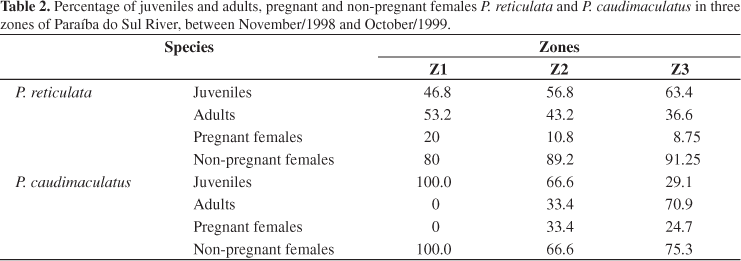Cyprinodontiformes fishes (guppies) are widely distributed in Neotropical regions and use deteriorated microhabitats in rivers where few species can occur. This study was carried out in a stretch of the Paraíba do Sul River in bracketing a large urban-industrial complex. The aim was to assess eventual effects that the industrial complex could have on distribution of two closely related fish species of guppies, Phalloceros caudimaculatus and Poecilia reticulata. The area was divided into three zones: Z1, 40 km upriver of the major urban-industrial complex of Volta Redonda; Z2, just down river of the complex; and Z3, 30 km down river of the complex. Six sites (two in each zone) were sampled monthly between November 1998 and October 1999, using a standardized fishing effort with cast net throws, trays lifts and seine hauls, covering different microhabitats, that is, riffles, pools and the proximity of the river's margins. Poecilia reticulata was widely distributed, peaking at Z2, the most polluted area, while P. caudimaculatus showed the highest abundance at Z3, being almost absent in Z1. Both species occurred in high numbers throughout the year but they were scarce between April and June. Females outnumbered males for both species in most size classes and at all sites. Juveniles were more abundant than adults, with non-pregnant females outnumbering pregnant ones. Condition factor was always higher in males than females but only males P. reticulata showed significant difference among the three zones, with the highest values at Z2. The higher number of females confirms the expectation that these species can use very polluted areas and that availability of food provided by organic loads allowed their distribution all over the area. Although these two species have shown indication of spatial separation in the study area, their similar seasonal patterns of occurrence suggest that they respond in a similar way to changes in environmental conditions.
pollution; distribution; Cyprinodontiformes; population structure; Paraíba do Sul River







